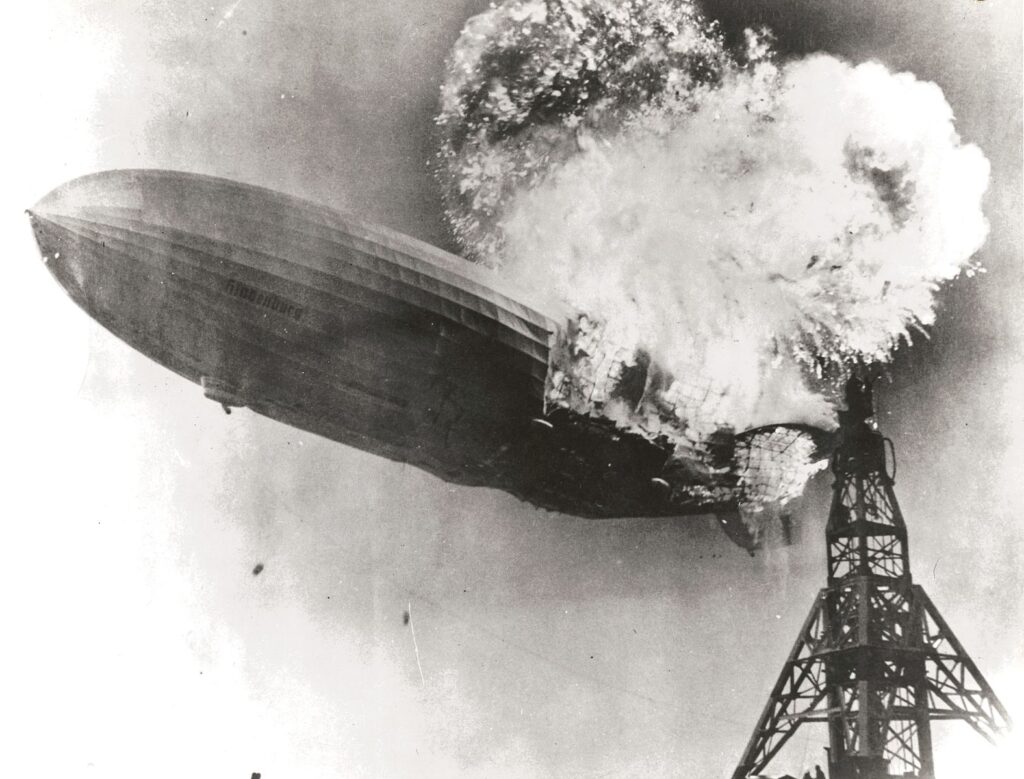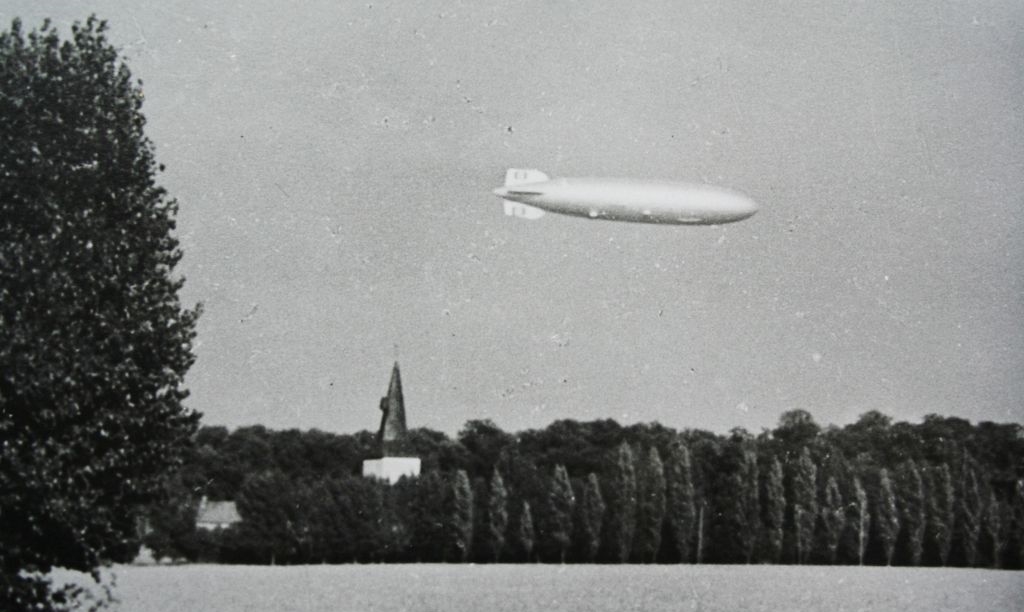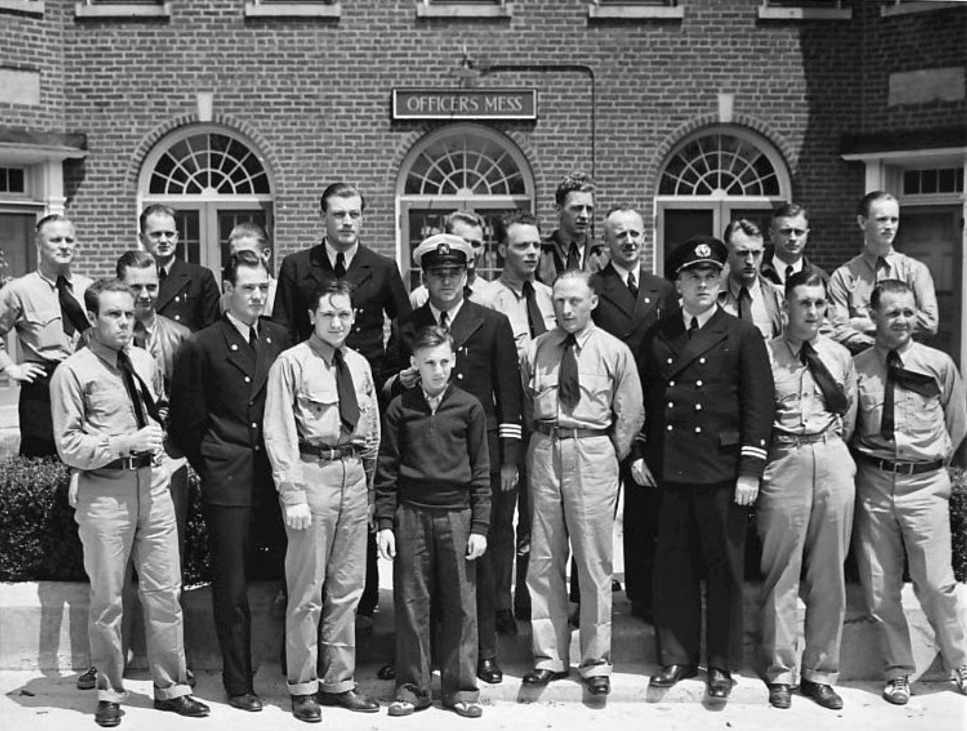The phrase has been used hundreds, if not thousands, of times since it was first uttered in horror by Herbert Morrison. This quote has become so ubiquitous with scenes of horrible tragedy and the like that the true origin of it has faded from the mind of the public.
But anyone who knows the Hindenburg knows why these immortal words were first spoken, and how incredibly apt they were.
Eighty-six years ago, one of the most spectacular rigid airships ever made crashed in a ball of fire, killing 35 of its passengers. Pictures of the Hindenburg are used in everything from memes to classroom textbooks.
What caused the Hindenburg Disaster?

The Hindenburg Rigid Airship
To understand how something as catastrophic as the Hindenburg disaster occurred, you first have to be familiar with what exactly the Hindenburg was.
Despite what you may have heard, the Hindenburg was not a blimp. Instead, it was a rigid airship.
A rigid airship is defined as an airship that maintains its shape from an internal framework instead of being held into shape by the gas filling it. This made rigid airships sturdier than the common blimp, but also more time-consuming to construct.
The Hindenburg was the largest rigid airship ever constructed and was made by the Zeppelin Company in Friedrichshafen, Germany. At the time of the disaster, the Hindenburg was a tried and tested vessel and had made 10 transatlantic journeys from Europe to America already.
The airship was the height of luxury and style. It could make its journey to the States much faster than an ocean liner. It avoided the cramped experience of airplane flight and was briefly considered the future of long-distance air travel.
Rigid airships were already falling out of fashion when the Hindenburg disaster occurred, but the airship was still a sight to behold. Once it was burned to the ground, though, its destruction would mark the end of commercial airship travel once and for all.

Parts of an Airship
Airships are considered simpler machines than planes, but there are still a few parts that we’ll need to know to understand how the Hindenburg was destroyed so quickly.
- Framework: The airship’s internal structure.
- Hull/Envelope: The Fabric covering of the ship’s framework.
- Gondola: The structure beneath the main portion of the airship that houses crew, passengers, and the control center.
- Gas Cells Compartments: Internal chambers that hold the lifting gas, either helium or hydrogen.
The Hindenburg Arrives in Lakehurst
After a successful first season, the Hindenburg had already completed one voyage in its second season before it began its final, fateful journey.
All of these successes made the captain, Max Pruss, and his crew confident in the airship, and for good reason. Hindenburg had been consistent during its brief flying life, and there was little reason to believe that this trip would be any different.
Over the ocean, strong headwinds had slowed the airship down, making it arrive in the United States later than anticipated. Other than this, the initial portion of the flight was uneventful.
When the Hindenburg arrived, thunderstorms had formed over Lakehurst, and Captain Pruss detoured over Manhattan, where the enormous ship caused quite the ruckus.
The world’s largest airship drew a large crowd. From there, Pruss maneuvered the airship for a tour over the New Jersey coast, burning time until the storms were finally clear.
At 6:22 pm, Pruss received confirmation that the storms had finally passed, and he rerouted to the landing field at the Lakehurst Naval Air Station.
The Hindenburg Disaster
The Hindenburg arrived at Lakehurst Naval Air Station around 7 pm and prepared for landing.
Rigid airships don’t land on the ground themselves, but drop mooring lines and are tethered by ground crewmen. Hindenburg was to perform a high altitude, or flying moor, that night, which consisted of dropping the lines while still quite high in the air.
This wasn’t a common type of mooring for Hindenburg, but it was ideal for times when there were fewer ground crew than usual. At first approach, the crew was not prepared, and Pruss had to circle the airship around for a second attempt.
The airship would be connected to a mooring mast on site, which is a tall tower-like structure used to secure the airships in place. It took some careful maneuvering from Pruss, including dropping water ballast to even out the weight of the ship, before they were ready to drop the mooring lines at 7:21 pm.
It was at this point that some witnesses saw the first signs of disaster–fluttering on the ship’s fabric, and a small, blue flame.
Hindenburg Fire and Crash
Minutes after the lines were dropped, flame seemed to engulf the airship in seconds as gas cells near the tail ignited. At 7:25 pm the fire began in earnest on the port side, spreading swiftly. This caused an explosion in the back half of the ship, and the bursting of more gas cells along the bow.
As the back of the ship burned, the bow began to point skywards. A jet of flames escaped from the very front of the Hindenburg killing 9 crewmembers in the process. As the airship burned, the gondola hit the ground, followed seconds later by the bow as the entirety of the Hindenburg finally succumbed to the fire.
It took less than a minute for the entire disaster to occur–somewhere between 32 and 37 seconds.
During this time, Herbert Morrison, who we mentioned earlier, was recording audio for a delayed broadcast of the Hindenburg landing the next day. This was rare back in the 1930s, as most coverage via the radio was live.
Because of this coincidence, we have a real-time eyewitness report of the crash, including the famous quote, “Oh, the humanity!”.
News footage was also being recorded of the landing, giving us startlingly clear pictures and video of nearly the entire Hindenburg disaster.
Deaths on the Hindenburg
All and all, 35 of the 97 people aboard the Hindenburg were killed in the disaster. Of those lost, 13 were passengers, and 22 were crew.
There was one final death–Allen Hagaman, a part of the ground crew who was struck by the crashing airship.

Why Did the Hindenburg Explode?
There are several theories about why the Hindenburg exploded, but the more easily answered question is, why did the Hindenburg burn?
Two types of lighter-than-air gasses can be used to lift an airship–helium, which is nonflammable, and hydrogen which is highly flammable.
The German-made Hindenburg was built to be filled with helium, but the gas proved to be rare and hard to acquire. Combine that with the fact that America refused to export helium to the Germans, and they were left with little choice but to fill the airship with flammable hydrogen.
Using hydrogen over helium was the death sentence of the Hindenburg and the sole reason it burst into flames so rapidly.
Now, let’s look at some things that could have caused the explosion in the first place.
- Static Electricity: The leading theory for the catalyst of the Hindenburg fire is simply static electricity caused by either atmospheric or weather-related means or generated somehow during the landing.
- Sabotage: There are numerous conspiracies regarding sabotage and the Hindenburg, mainly related to anti-Nazi groups, but no credible evidence has ever been found.
- Engine Exhaust: Sparks from the engine exhaust have been considered a possible ignition source for the hydrogen gas filling the airship.
- Lightning Strike: Due to the previous storms in the area, it was suggested that a lightning strike may have been the source of the ignition.
No matter what caused the Hindenburg disaster, it remains one of the most iconic and tragic air disasters in United States history. Briefly the largest airship on the planet, and then a symbol for the dangers of airship travel, the ghost of the Hindenburg disaster lives on, even today.
References
What Really Felled the Hindenburg?-Donovan Webster
The Hindenburg Disaster

